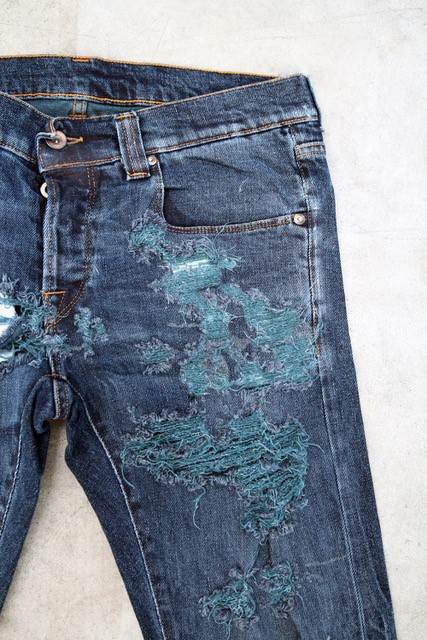Tonello unveils dyeing, ozone and laser developments
01/05/2024

DyeMate enables garment dyeing inside the drums, and was presented with an updated spectrum of shades.
Alberto Lucchin, marketing and sustainability manager at Tonello, told Inside Denim: “Until now, if you wanted to dye in this way, you would have to do it manually, but we completely industrialised the process. The oxidisation and reduction of the indigo is done inside the machine. We can achieve both deep indigo colours or lighter, depending on the desired look. This same technology can be used with sulphur and vat dyes, so we can achieve different casts.”
The technology can be added to existing Tonello machines.
On the ozone side, Tonello presented ‘The dark side of OBleach’, highlighting its effects on black jeans and fabrics.
“These dyes are commonly difficult to discharge, but with this technology we can achieve natural grey tones. It works using a combination of ozone, plus our nebulisation system, instead of using bleach, chlorine or permanganate to bleach down the garment. Using ozone also reduces the quantity of water needed.”
Tonello also updated THE Laser with Ripper Mode (pictured). “We have improved the software so we can achieve authentic laser breakages while keeping the weft intact,” added Mr Luccin. “One of the main issues working with laser is that it’s easy to create a hole. With this system we can be very precise. We are always working to improve the system and to reduce human errors. For instance, we have a software that automatically recognises the garment and positions the laser design in the right place.”
The company is focused on improvements in technology for dyeing, as Mr Luccin points out this is a side of the industry that’s growing, and was the first focus for the company when it launched in 1975. “We have processes to reduce the liquoration, or the quantities of water needed, to improve the colour, or to create effects. We’re also working on high temperature dyeing machines for synthetic fibres, working on water reduction and improving dyeing performance.”
In terms of its Wake system for natural dyes, it has developed a new dye from coconut shells. Mr Luccin commented that these dyes can be fixed with salts, as they prefer to match them with natural products. “If the customer wants to improve light fastness, we can add resins, but they normally they prefer to stick to natural products.”
Tonello invites brands and designers and into the company to demonstrate the washing and finishing technology side of the industry and collaborate on projects and small collections. “We also do a lot of work with schools, because young people only really know about the design or the fabric, but the finishing is so important, because that’s what makes the garments different,” added Mr Luccin. “This new generation are more aware and more interested in doing better, so we remain positive.”










